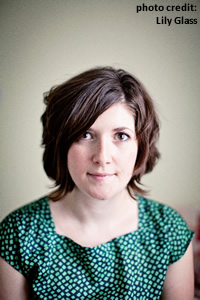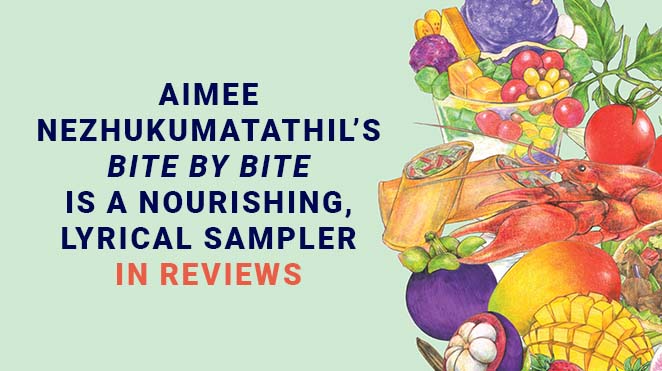Claire Vaye Watkins, author of the debut story collection Battleborn, has already enjoyed a rising star’s red-carpet rollout: a sterling track record in publications like Granta, One Story, Glimmer Train, and The Paris Review. Major publishing houses vying for her manuscript. Glowing reviews in The New York Times and Publishers Weekly. Terrific blurbs from Pulitzer-winner Paul Harding and short-story doyenne Joy Williams. A spread in Vogue, among other glossies. The Mad Libs comparisons: “Lonesome Dove as written by Truman Capote.” As if all this weren’t enough, Watkins was just named one of the 5 Under 35 honorees by the National Book Foundation along with Justin Torres, Stuart Nadler, Haley Tanner, and Jennifer DuBois.
Given her life story, however, my guess is that Watkins would shrug off any envy such accolades might inspire. Her mother committed suicide just before Watkins completed her B.A.; her father trolled female recruits for Charles Manson, though he didn’t participate in the Helter Skelter murders and died when Watkins was a child. She’s known the worst kind of loss.
She’s also transformed it into startling, original fiction. Battleborn’s ten stories are howls from the Mojave Desert where she was raised and are peopled with Nevada’s prospectors and prostitutes, gamblers and ghosts. Here Watkins is at once myth-maker and miniaturist. In the opening story, “Ghosts, Cowboys,” she uses the famous Comstock Lode as a sort of Pandora’s Box whose riches give rise to the state of Nevada and unleash its particular brand of evil and folly upon America, hybridizing this already rich historical material with the sins of her wayward father. She’s just as comfortable describing the woes of a couple dealing with their first child as she is a Vegas trip gone bad. Did I mention the collection includes a sixty-page novella set in 1849?
Watkins is the real deal. I had the pleasure of recently interviewing her by e-mail. Her answers are as thought-provoking as her fiction.
 Chapter 16: Battleborn’s stories contain numerous love triangles. Were you aware of this figure’s recurrence as you were writing the collection? What’s its significance?
Chapter 16: Battleborn’s stories contain numerous love triangles. Were you aware of this figure’s recurrence as you were writing the collection? What’s its significance?
Claire Vaye Watkins: Erin McGraw taught me the beauty of the love triangle. In fiction, I mean. Triangles—love or otherwise—are great for plot because your characters’ allegiances are constantly shifting. It’s an unstable arrangement, which is especially useful for a writer like me because I struggle with plot endlessly. One of my high-school-age writers, a Nashvillian named Sam Bollen, called stories with a triangle of characters The Three Legged Chair. Isn’t that great?
Chapter 16: I was also struck by the way in which characters are torn between the beloved and the family, or see intimacy as a threat to family and so feel compelled to make choices between them. Many of your characters struggle to integrate love and family or have love threatened by family (“Wish You Were Here” and “Man-o-War,” for example). Why is the choice so stark? Put another way, why is this such a challenge for your characters?
Watkins: Many of the characters in Battleborn struggle to make room in themselves for someone else. Often the space inside them is taken up by a toxic or troubling legacy, be it familial, cultural, spiritual, historical, or geologic. Love is often offered as antidote to all that toxicity, but if you feel the toxicity is a part of you, if your liver is marbled with it, as in “Ghosts, Cowboys,” then love becomes self-annihilation. Many of them hold onto the hurt their families represent, hug it to them. Many of them, I think, like the sensation this brings them because it is sensation at all, and they perhaps fear that, were they to let it go, move towards some beloved standing right in front of them, they might lose their ability to feel. They fear the self-severing that is a part of loving someone, a fear that is perhaps more acute in the West, where our roots are shallower.
Chapter 16: The stories “Ghosts, Cowboys” and “The Diggings” deal with the West’s mining past, its allure and consuming nature. The Comstock Lode, for instance, takes on mythic powers in “Ghosts, Cowboys.” How does a place’s history inform character in Battleborn?
Watkins: It’s everything. I can’t come up with anything about a character until I know where they are. Battleborn enacts place as origin story, landscape as foundation myth. The history is a big part of it, but also the topography, the weather, the flora and fauna, local industries, class, distance. Place is the context for character: someone who works in a brothel will think a lot about sex, reciprocity, about using people and being used. A prospector living on the edge of the Black Rock desert will be prone to look for treasure in impossible places. A young Buckeye just arrived at the California gold fields will be open to explosions of mysticism and madness. A teenage girl whose world extends to the Last Vegas Strip, a landscape assembled to be imploded, will surely find freedom in destruction. A nearly happy husband and father will rendezvous with his ghosts in a ghost town.
 Chapter 16: Talk about the long and short about writing a short story. Which story in the collection cost you the most sweat, blood, and tears? Which one arrived most fully developed?
Chapter 16: Talk about the long and short about writing a short story. Which story in the collection cost you the most sweat, blood, and tears? Which one arrived most fully developed?
Watkins: I started the book when I started my MFA at Ohio State, so naturally the earlier stories were the longest to come. I drafted “Ghosts, Cowboys,” “The Past Perfect, the Past Continuous, the Simple Past,” “Graceland,” and “Man-O-War” during my first year, and they took the remaining three years to get right. “Man-O-War” might never have gotten right if it weren’t for Hannah Tinti at One Story, who made sense of the mess I sent her. “The Last Thing We Need” was delivered via lightning bolt after reading a friend’s blog about finding some strange stuff in the desert. It’s the only such gift I’ve ever been given, and it came so quickly that I didn’t trust it. I thought I’d be laughed out of the workshop until a friend sent me a text message saying he loved it. “The Diggings” was the last story I wrote, and you can see from its scope and length that my mind was already adjusting to one day writing a novel.
Chapter 16: You’ve already been asked a million questions about your father’s role in Charles Manson’s group, so rather than rehash that, I thought you might talk about the use of autobiography in fiction. Put as a question: is autobiography fiction in another form?
Watkins: Maybe in fact fiction is autobiography in another form. I’ve learned more about my obsessions and hang-ups from people talking about Battleborn than in all the years I spent in therapy. My thesis defense was not unlike a conversation between two brilliant analysts who forgot I was in the room. I don’t think about the use of autobiography in fiction much differently than I do other forms. “Ghosts, Cowboys” is a fictional story told using the autobiographical form the same way “The Last Thing We Need” is a fictional story using the epistolary form. They’re both strategies to establish authority and cultivate verisimilitude, which every story must do.
Chapter 16: In a wonderful, disturbing, and indirect way, “Rondine Al Nido” deals with 9/11. Can American fiction writers ever tackle 9/11 head on, or is it a watershed moment in our history and consciousness that we must write around, as it were?
Watkins: The 9/11 story has emerged as a new genre of American storytelling. I was most interested in young people who witnessed that event from the outermost periphery because that was my experience. Perhaps I felt entitled only to tell that perspective; perhaps I also felt that was the only angle I was capable of depicting with artistry and nuance. A lot of us on Pacific Standard Time were asleep when the planes hit. I was a senior in high school, which meant 9/11 pulled me into political consciousness rather than upheaving an already existing political and global awareness. I’d never been to New York, and I was certain I never would. I didn’t know the World Trade Center existed. What most enthralls and disturbs me about my reaction then was how unsurprised I was: the world as I saw it at seventeen was a place where violence and destruction were inevitable. I wanted to write a story asking how a young woman would cultivate such a bleak worldview, and where that darkness would take her.
Chapter 16: Ann Patchett has argued that a writer is expert in the short story or the novel but not both. Do you agree or disagree?
Watkins: Well, I’m working on a novel right now, so I hope to one day offer Ann a compelling counterargument. But I can see why she’d say that: novel writing is a very different beast. I’ve been working on this novel, set in the aftermath of the water crisis in the Southwest, for a couple years, and I’m still regularly surprised by how bewildering the experience is. I miss stories very much.
[This interview originally appeared on October 8, 2012.]

Adam Ross is the author of Mr. Peanut and Ladies and Gentlemen. This semester he is serving as the visiting writer-in-residence at the University of Tennessee in Knoxville. He lives in Nashville.
Tagged: Fiction





